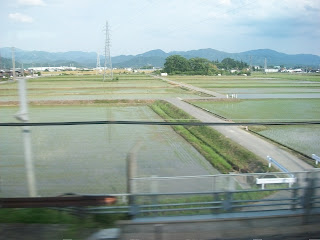
Rice is not native to Japan. In fact the crop was introduced to Japan in the third century B.C. In the Yayoi period. It is likely that rice traveled to Japan from China or Korea. It naturally grows in more tropical conditions which is why there is sometimes an agricultural and economic scare in cooler summers in Japan.
There are many types of rice. The type of rice found most often in Japan is a short-grained “japonica” variety. It is uniquely sticky and round. Rice in Japan is also typically white which means that the outer husk (a wonderful provider of insoluble fiber which is responsible for healthy digestion and protection from cardio-vascular disorders) is removed. I wonder why a highly health-conscious culture such as Japan would remove this healthy outer husk. After hours of research the reasons I found for this action are as follows:
-Brown rice (which maintains it's husk) is chewier than white rice which adds another element to the palate upon eating. White rice is simpler, a characteristic of food which is appreciated especially in Japan.
-White rice has a sweeter, more pleasant fragrance than brown rice, which has a grassier, more harsh scent to it.
-White rice is also purer in appearance. It's brightness lends a clean and clear element to any meal. This aspect is also appreciated in Japan.
Brown rice is also available in Japan but not nearly as readily as white japonica rice. Even though fiber is removed from the number 1 grain of Japan, Japanese people seem to experience enhanced digestive health due to their consumption of high amounts of fermented foods and beverages which are not often consumed in the west.

No comments:
Post a Comment